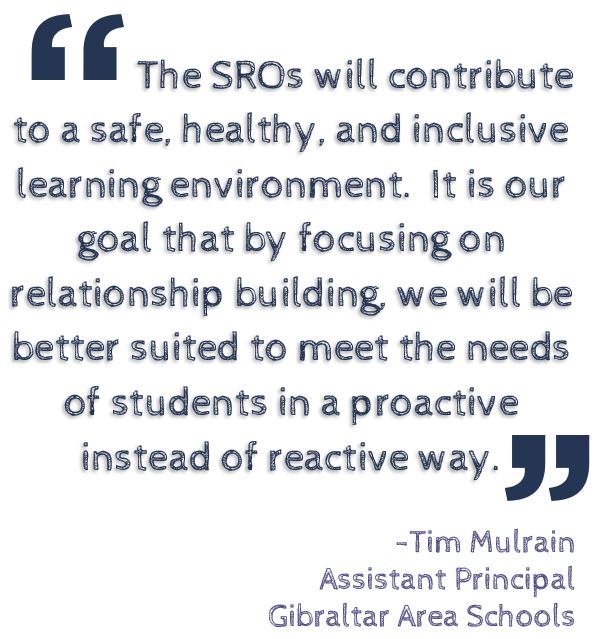
The Door County Sheriff’s Department has adopted the “triad concept” as defined by the National Association of School Resource Officers. This establishes three primary roles of a School Resource Officer.

An Informal Mentor and Counselor
School Resource Officers forge relationships with students to help change behavior so that arrests become less likely to occur, such as:
- Relationship issues
- Family dynamics
- Self-esteem
- Substance abuse
- Mental health
- Decision making
- Attendance issues
An Educator
School Resource Officers provide both formal and informal
education to students, parents, and school personnel on a
wide variety of topics, including:
- School and personal safety
- Proper use of technology – internet safety
- Drug, alcohol, tobacco, vaping
- Harassment and anti-bullying
- Resilience
- Driver safety

A Law Enforcement Officer
School Resource Officers are sworn law enforcement personnel, and on occasion are called upon to play this traditional role to ensure the safety of our children, including:
- Regular, reliable, visible on-site presence on campus
- Deterrence for “lone wolf” attackers
- Investigate threats against students and the school
- First-responder for first-aid events
- Traffic control around campus
- Critical member of the school’s threat assessment team
- Sword officer to serve a traditional policing role
It is important to note that School Resource Officers are NOT involved in disciplinary issues that are normally handled by teachers and administrators. The program does not elevate typical (albeit troubling) school-age behaviors into police interaction. Instead, officers always approach a situation with the idea to first maintain their primary role as educators and informal mentors. They assume a law enforcement function only when a student’s behavior goes beyond what is traditionally handled by school personnel.
The National Association of School Resources Officers has demonstrated that this balance, and its commitment to avoiding involvement in normal school discipline, has been central to the reduction in the rates of juvenile arrests.
